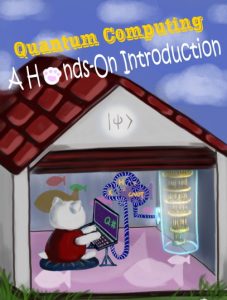Microsoft Garage, in association with a few of the greatest minds of the Microsoft ecosystem, presents a Reference Guide for Quantum Computing, a book that can be a catalyst in your journey of learning Quantum Computing. It will take you on an intellectual adventure from understanding what a qubit is, how to manipulate its value, to building quantum algorithms. It will also provide an overview of quantum hardware technologies that are being developed.
 Quantum Computing promises to solve some of the world’s biggest challenges that classical computers run into limitations to solve, revolutionizing every field from medicine to finance, from logistics to climate change, and information security. Its capability of unprecedented computing power makes it important for everyone to learn and understand quantum computing.
Quantum Computing promises to solve some of the world’s biggest challenges that classical computers run into limitations to solve, revolutionizing every field from medicine to finance, from logistics to climate change, and information security. Its capability of unprecedented computing power makes it important for everyone to learn and understand quantum computing.
The field of Quantum Computing is an amalgamation of Physics, Mathematics, and Computation. Learning quantum computing may not seem simple at first. Phenomena in quantum mechanics may not be immediately intuitive for most people since our daily experience with the world is dominated by classical physics phenomena. One may wonder, what exactly is quantum computing and how is it different from the computers of today? Will quantum computers replace the current computing paradigms, or is one merely comparing apples to oranges?
As quantum computing enthusiasts who continually study the subject, the question the team behind the project get asked most often is: how does one get started?
Start here – an open book made by the quantum community
A team of enthusiasts at Microsoft is releasing an open book through the Microsoft Garage with the goal of making Quantum Computing more accessible for everyone. The book covers the concepts of quantum computing, along with programming exercises in the Q# (Q-sharp) language, a domain-specific programming language used for expressing quantum algorithms. The book will help anyone interested in quantum computing to learn the concepts and quickly get hands-on experience with programming using the quantum computing language. The authors approach the writing from the perspective of a self-learner, providing answers to questions they had when they were learning but had to search in various scattered materials, such as textbooks and online courses. They also invite the community to join them in perfecting the content. The open book is released in the form of a GitHub repository. Anyone can read online and contribute via GitHub pull requests and peer review.
The content in the book establishes three phases.
- Phase 1 will introduce the basic concepts of quantum computing like quantum states, qubits, gates, measurement, circuits, etc.
- This will be followed by Phase 2 where the quantum algorithms are explained using step by step derivations.
- Both Phase 1 and 2 concepts have corresponding Q# programming exercises to help learners get familiarized with the concepts.
- Phase 3 covers the state-of-the art hardware systems and real-world applications of quantum computing.
- The book also contains Mathematics and Physics concepts for interested readers to gain deeper insights, but are not mandatory.
Even though Physicist and Nobel laureate Richard Feynman said, “I think I can safely say that nobody really understands quantum mechanics,” with this book, the project team is striving to lower the mental barrier by making quantum computing more approachable. The team hopes readers have an enriching learning experience with this book.
Check it out, and provide your feedback.
